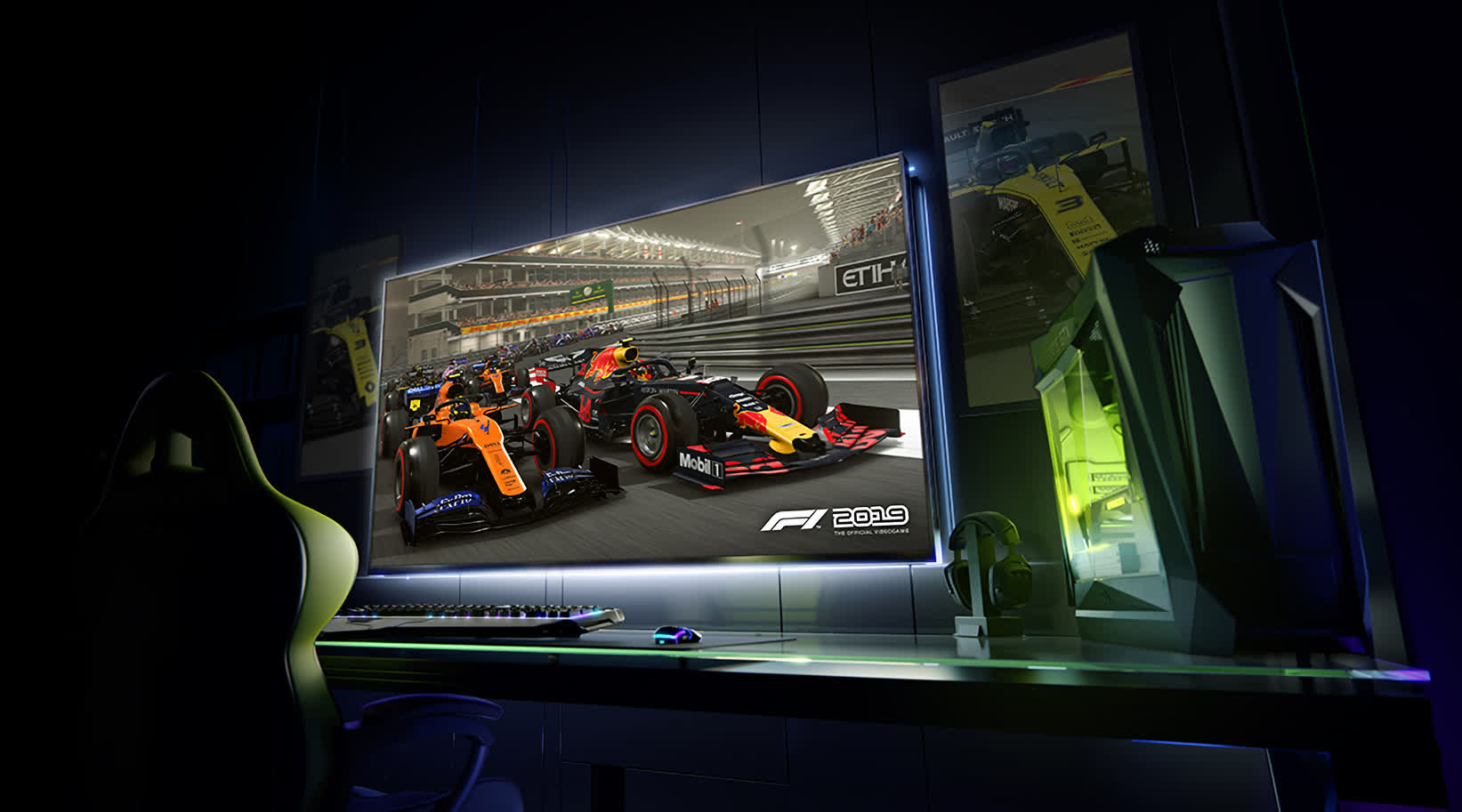Bottom line: Nvidia has launched an updated version of Ultra Low Motion Blur (ULMB), a technique for G-Sync monitors to boost motion clarity that initially rolled out back in 2015. The new G-Sync Ultra Low Motion Blur 2 – yep, that's ULMB 2 – promises to rectify some of the shortcomings that plagued the original and kept many competitive gamers from utilizing the feature.
As Nvidia recounts, monitor response times were pretty slow when ULMB first came along which resulted in significant ghosting and blurry images. To improve motion clarity, or the ability to clearly see and comprehend objects in motion, ULMB utilized a technique called backlight strobing which disabled the backlight 75 percent of the time.
The original ULMB also had to reduce the refresh rate in order to give pixels more time to transition to the right spot before turning the backlight on. This combined with a less bright image (remember the backlight is off three-fourths of the time) were drawbacks that lots of gamers simply were not willing to accept.
With ULMB 2, users get full refresh rate backlight strobing which results in a significantly brighter image. Nvidia's new tech also only turns on the backlight when each pixel is in its correct state so you don't see it transitioning, which causes blur.
To minimize crosstalk, Nvidia is able to "control the response time depending on where the vertical scan is, such that the pixels throughout the panel are at the right level at precisely the right time for the backlight to be flashed." It is a technique Nvidia calls Vertical Dependent Overdrive.
ULMB 2 is available to try now and is absolutely free via a single-click firmware update. To be compatible with ULMB 2, monitors must meet the following requirements:
- Deliver over 1,000 Hz of effective motion clarity
- Drive ULMB 2 at the monitor's full refresh rate
- Deliver over 250 nits of brightness with minimal crosstalk or double images
As of this writing, two monitors – the Asus Predator XB273U F and the ROG Swift 360 Hz PG27AQN – support the new feature. Two more – the ROG Swing Pro PG248QP and the AGON AG276QSG – are coming soon, we're told.
